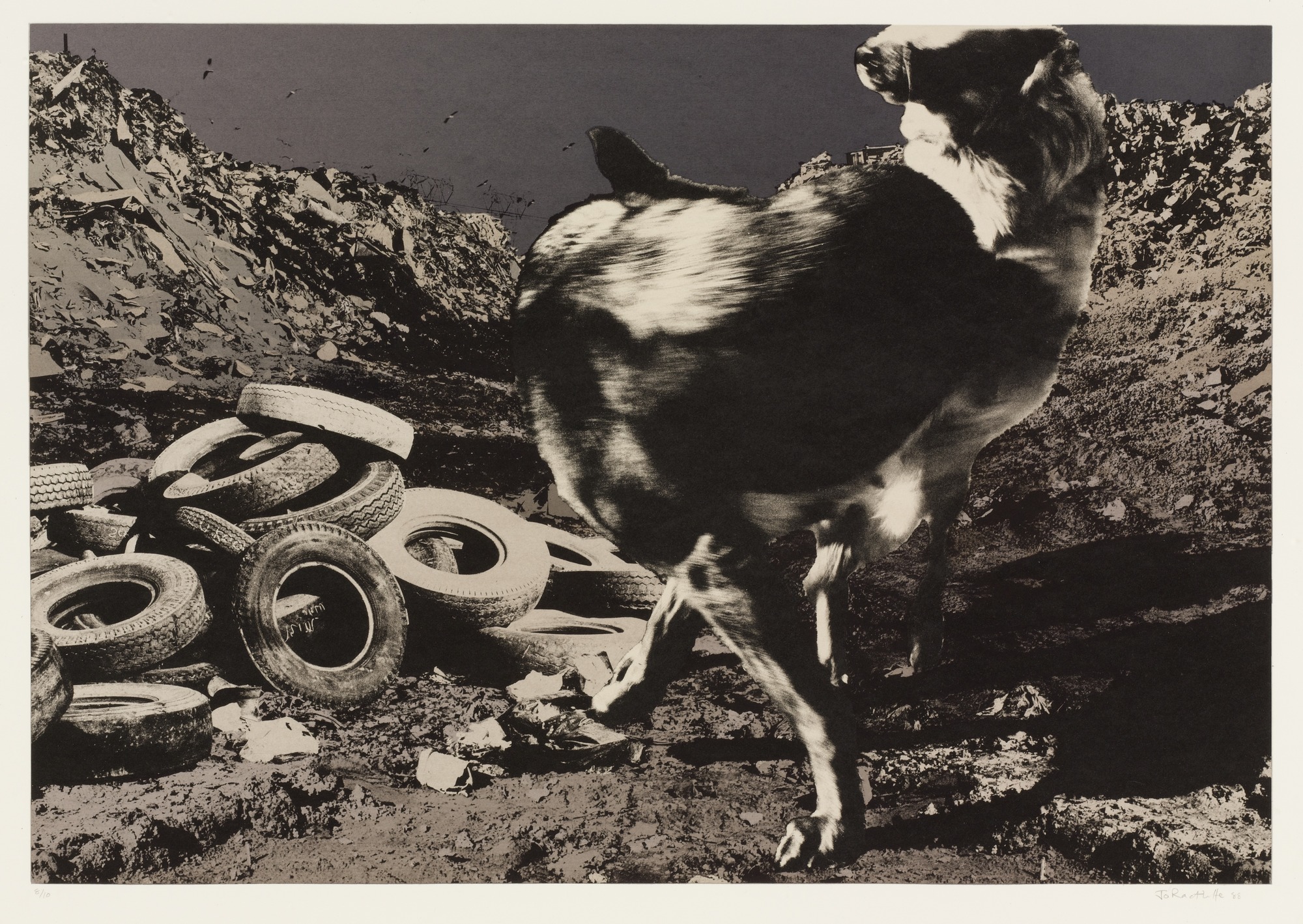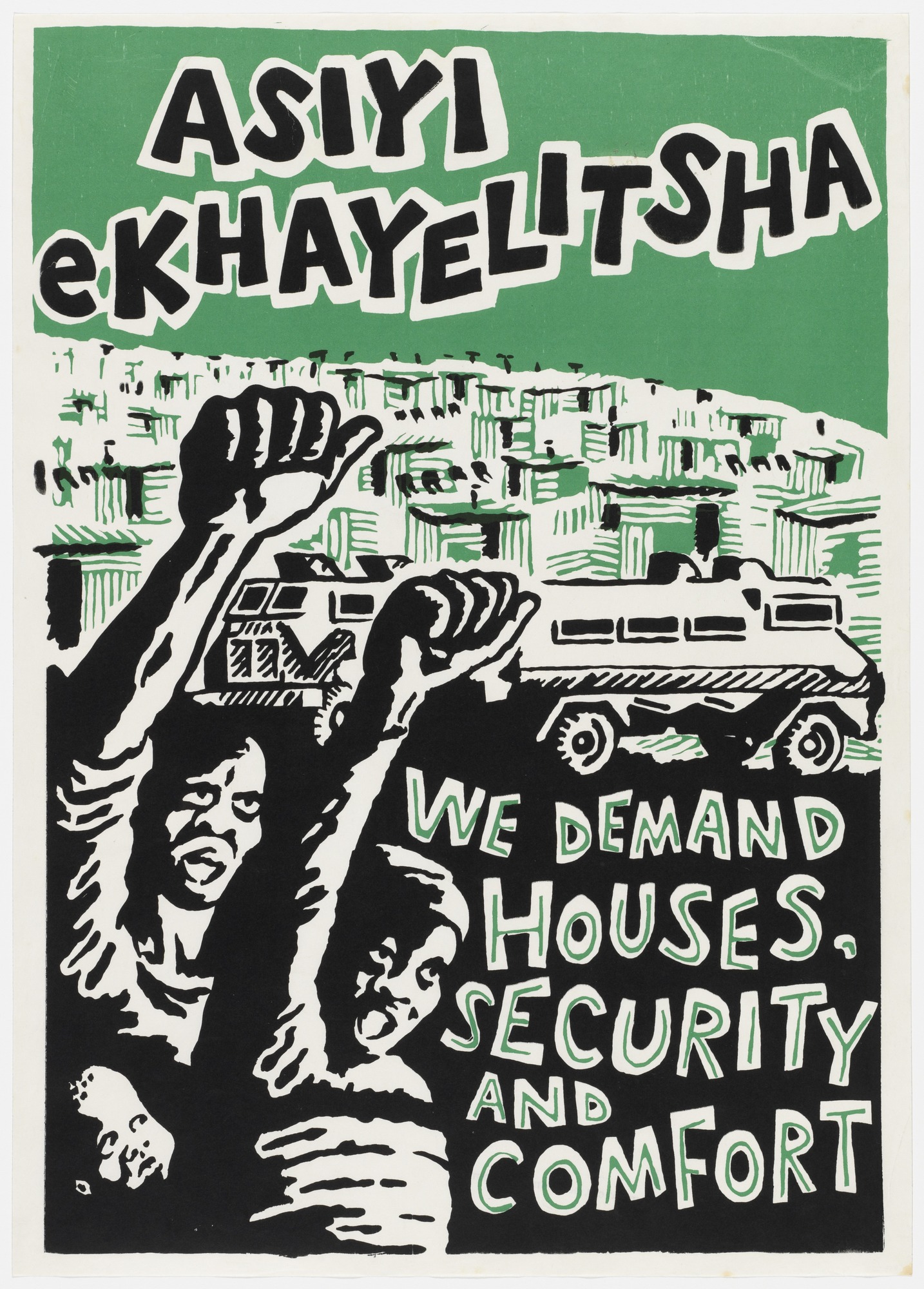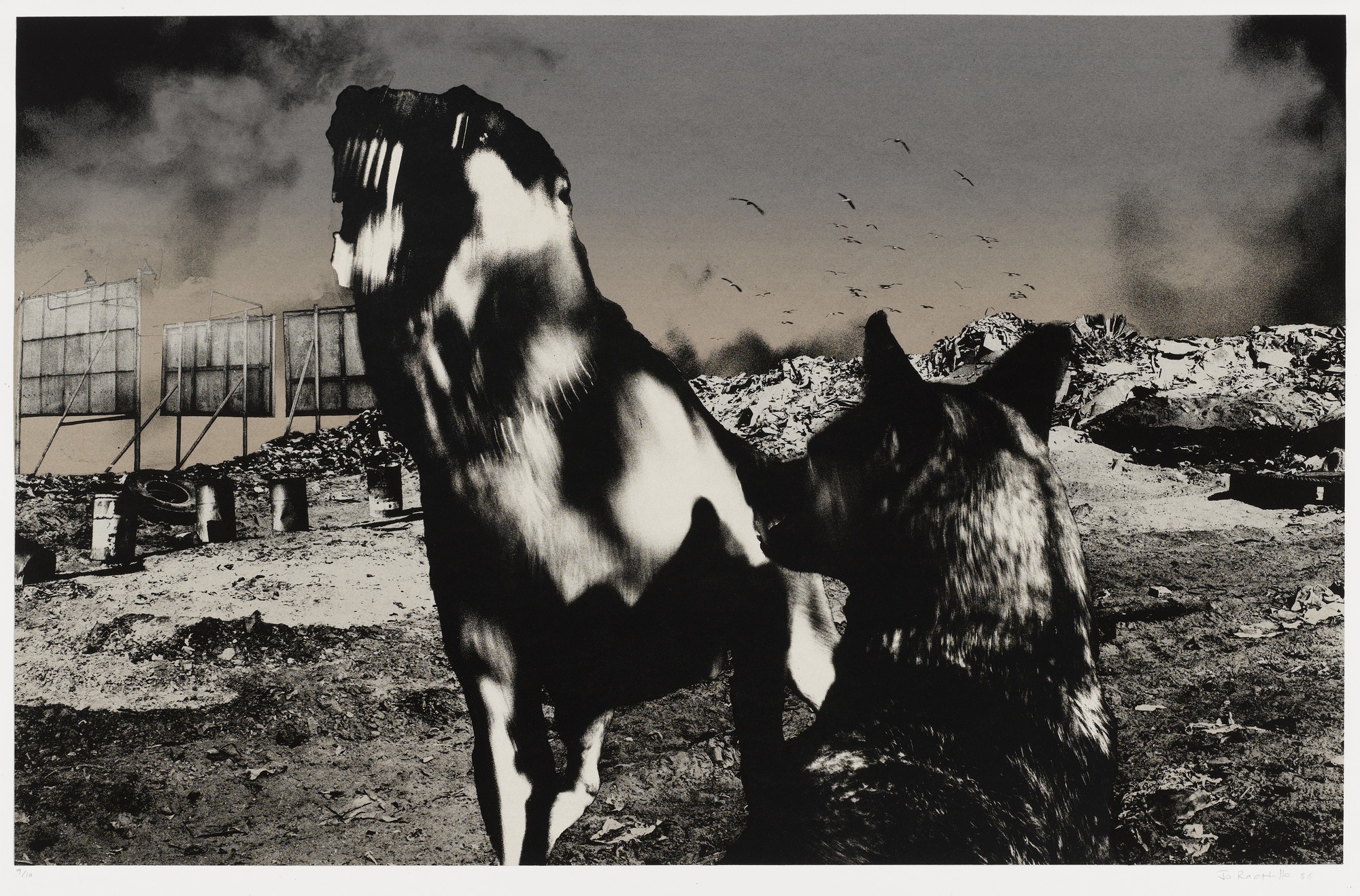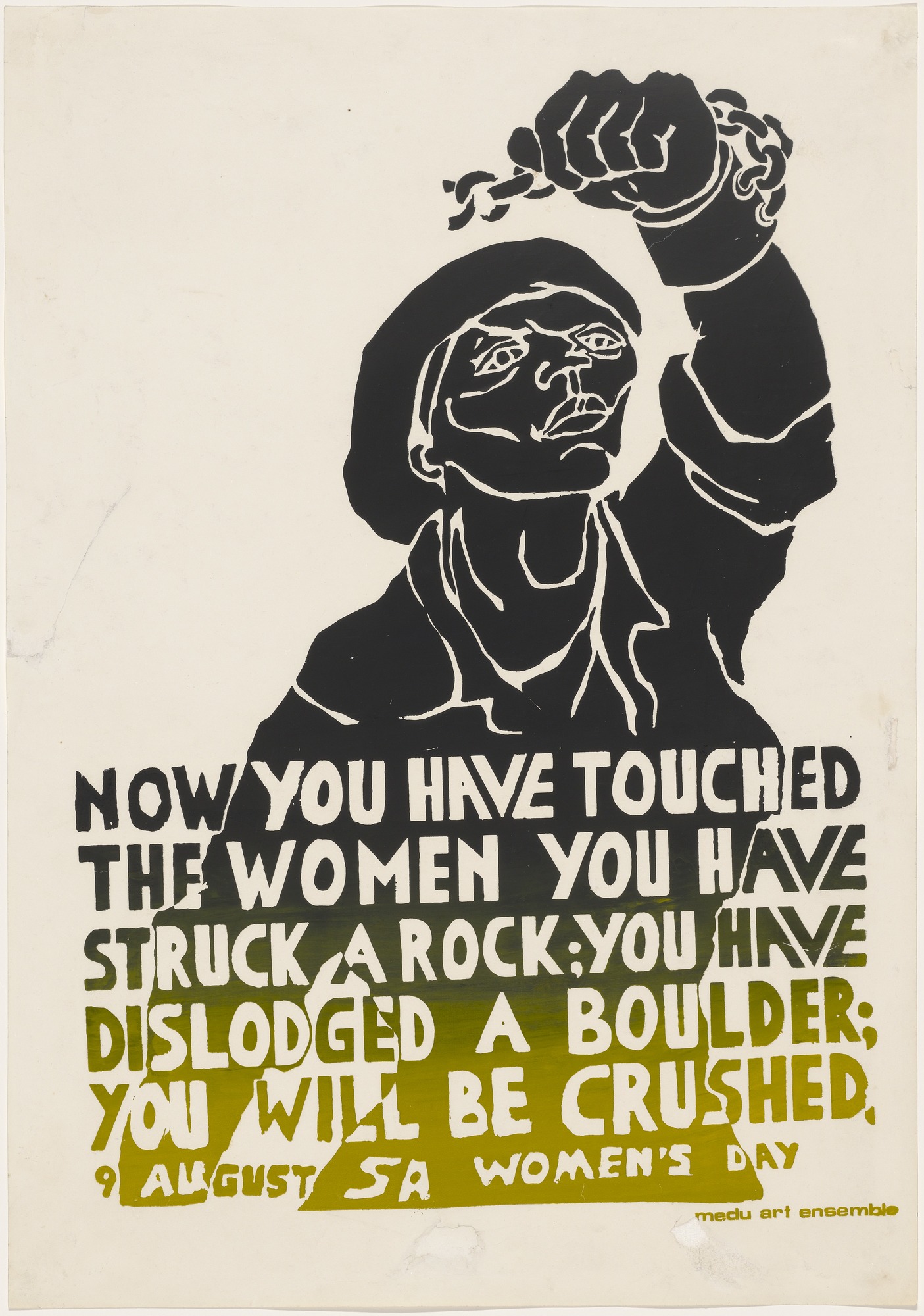IMPRESSIONS OF SOUTH AFRICA: 1965 TO NOW

Save the Press Campaign
Save the Press
1989
Brett Murray derived this image from a photograph in David Goldblatt’s historic photobook On the Mines (1973), which explores the harsh realities of mining in South Africa. The muzzled face appeared on posters and stickers for Save the Press, a short-lived grassroots campaign formed in Cape Town by journalists in reaction to draconian restrictions imposed by the apartheid government on the freedom of the press. The degraded image, made via repeated photocopying and collage, recalls an infamous 1977 Sex Pistols poster (God Save the Queen, by Jamie Reid), in which Queen Elizabeth II’s eyes and mouth are collaged over; Murray was briefly involved with a postpunk band in the early 1980s, and had created many posters in this spirit.

United Democratic Front (UDF)
One Year of United Action
1984
The United Democratic Front (UDF), a federation of democratic organizations and trade unions, was established in 1983 to fight constitutional reforms that would racially segregate South Africa’s parliament, leaving no representation for black people, who were considered citizens of Bantustans (separate territorial homelands), not of South Africa proper. UDF organized nationwide protests against these reforms and produced, through its Screen Training Project, scores of banners, posters, and T-shirts. One Year of United Action, which celebrates UDF’s first anniversary, is typical of the directness and symbolism of the group’s imagery; printed in red, black, and yellow, it emphasizes the racial diversity of its membership.

Jo Ractliffe
Nadir 13
1984
In Nadir Ractliffe has combined photographs of aggressive dogs (signs of violence and savage police control) with images of squatter camps, forced removals, relocation settlements, and garbage dumps to communicate the widespread fear and anger caused by the states of emergency imposed by the apartheid government in its desperation to maintain control of South Africa in its final years. The artist has described Nadir as “a way to image this world gone mad, without simply reiterating the discourse of resistance.” She combined photocopies, sketches, and collage to arrive at final compositions, which she then printed using layers of photolithography, varnish, and screenprint.

United Democratic Front (UDF)
South Africa Asiyi ekhyalitsha (We are not going to Kahayetlitsha)
1983
Women’s organizations played a large role in the anti-apartheid movement, instigating campaigns such as the one this poster accompanied, protesting the forced relocation of black residents near Cape Town to Khayelitsha, a government-controlled township away from the city. Asiyi eKhayelitsha is Xhosa for ‘We are not going to Khayelitsha.’ Jonathan Shapiro (today known as Zapiro), the poster’s graphic designer, is South Africa’s leading editorial cartoonist.

Vuyile Voyiya
Black and Blue 1 from Black and Blue
2005
In this series Voyiya pushes the limits of linocut with precise short gouges clustered together in masses on sheets grouped cinematically, suggesting a connection with film and sculpture, the other mediums in which the artist has worked. The series title, Black and Blue, alludes to racial violence, a theme of the artist’s work of the 1980s.

Jo Ractliffe
Nadir 15
1988
In Nadir Ractliffe has combined photographs of aggressive dogs (signs of violence and savage police control) with images of squatter camps, forced removals, relocation settlements, and garbage dumps to communicate the widespread fear and anger caused by the states of emergency imposed by the apartheid government in its desperation to maintain control of South Africa in its final years. The artist has described Nadir as “a way to image this world gone mad, without simply reiterating the discourse of resistance.” She combined photocopies, sketches, and collage to arrive at final compositions, which she then printed using layers of photolithography, varnish, and screenprint.

Trevor Makhoba
God Wants His People from Break the Silence!
2000-01
Makhoba produced this linocut for the portfolio Break the Silence!, to which twenty-one artists contributed. The project was spearheaded by Art for Humanity, an organization that uses visual art to address human rights issues, including the HIV/AIDS pandemic in South Africa. Makhoba presents the acronyms as a theatrical graveyard of letters, utilizing the hard-edged contrast attainable with black-and-white linocut. The composition also appeared on billboards throughout urban and rural areas of South Africa where the incidence of HIV/AIDS is particularly high.

End Conscription Campaign
We Call for an End to Conscription
1986
The End Conscription Campaign opposed compulsory military service for white males in the South African Defense Force, which was frequently deployed in townships against black South Africans. Although failure to report for duty could result in arrest and a prison sentence, tens of thousands of men refused to serve.

Medu Art Ensemble, Gaborone, Botswana
You Have Struck a Rock
1981
This poster was created for Women’s Day, a South African national holiday commemorating a 1956 demonstration in Pretoria. Thousands of women gathered to protest the apartheid government’s pass laws, which required black South Africans to carry documents authorizing their presence in racially restricted areas. The text is based on a song that became the anthem of women’s struggle against apartheid and that today represents the strength of South African women in general. The poster was printed by Medu Art Ensemble, a collective of South African exiles and activists formed in 1978 in Gaborone, Botswana, eight miles across the South African border.

Sandile Goje
Black and Blue 1 from Black and Blue
1993
Goje made this print on the subject of reconciliation a year before South Africa’s first democratic election, in which Nelson Mandela, the African National Congress candidate, was elected president. Both its title and imagery reflect the artist’s optimism about reconciliation between black and white South Africans, represented by a handshake between a circular thatched Xhosa home and a Western-style suburban brick house.

Cameron Platter
Kwakuhlekisa
2007
This large-scale wall stencil—titled Kwakuhlekisa, a Zulu word meaning “amusing” or “absurd”—was created from a digital image and can be scaled up or down, depending on the space available. Spaceships have appeared in Platter’s drawing, video animation, and sculpture in recent years as symbols of “ushering in or delivering change when things get out of control on earth,” he has said. Platter has remarked that his work is an expanded form of printmaking. He is inspired by the stark idiom of black-and-white linocut, in particular the prints of John Muafangejo.

Gardens Media Group, Cape Town
In the World from May Day Is Ours!
1989
Gardens Media Project, a loose collective of students from the University of Cape Town, produced posters and ephemera for various political organizations, including affiliates of the United Democratic Front (UDF), a federation of democratic organizations and trade unions. In 1989 members created a series of screenprinted posters on the theme of workers’ rights. Printed at Community Arts Project, where much of the group’s work was carried out, the prints have the look of black-and-white linocuts but in fact were made using scratchboard, a photocopier, and stencils.